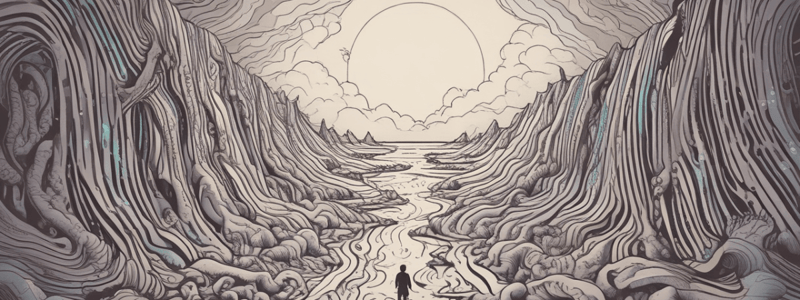Podcast
Questions and Answers
What percentage of OCD patients have a positive family history?
What percentage of OCD patients have a positive family history?
- 20%
- 40%
- 50% (correct)
- 60%
What is the primary purpose of obsessions according to psychoanalytic theory?
What is the primary purpose of obsessions according to psychoanalytic theory?
- To decrease anxiety
- To improve concentration
- To prevent undesirable ideas from entering consciousness (correct)
- To increase self-esteem
What is the lifetime prevalence of OCD?
What is the lifetime prevalence of OCD?
- 1–2%
- 2–3% (correct)
- 6–7%
- 4–5%
What is a common comorbid condition found in OCD patients?
What is a common comorbid condition found in OCD patients?
What is the age of onset for OCD?
What is the age of onset for OCD?
What is a common type of compulsion in OCD?
What is a common type of compulsion in OCD?
What is the primary treatment approach for OCD?
What is the primary treatment approach for OCD?
What is a characteristic of obsessions in OCD?
What is a characteristic of obsessions in OCD?
Flashcards are hidden until you start studying
Study Notes
Obsessive-Compulsive Disorder (OCD)
- Characterized by ego dystonic, time-consuming obsessions and compulsions that interfere with daily life
- Patients recognize their thoughts as excessive and usually try to resist them, but unsuccessfully
Theories of OCD
- Psychoanalytic theory: obsessions prevent undesirable ideas from entering consciousness, e.g. unconscious conflicts (sexual and aggressive)
- Behavioural theory: compulsions decrease anxiety, leading to reinforcement of the condition
- Biological theory:
- 50% positive family history
- 5-HT abnormalities
- Frontal cortex and basal ganglia abnormalities
- Anankastic premorbid personality traits in 70% of patients
Comorbidity and Prevalence
- 30% of OCD patients have comorbid depression
- Symptoms are exacerbated by depression
- Lifetime prevalence: 2-3%
- Male:Female ratio: 1:1
- Age of onset: usually by early twenties
Symptoms
- Obsessions: persistent thoughts, images, doubts, or impulses that are worrying, blasphemous, obscene, or socially unacceptable
- Content may involve dirt/contamination, sex, aggression, religion, or orderliness
- Compulsions: stereotyped acts, recognized as excessive, unreasonable, or exaggerated, often involving cleaning, repeating, checking, orderliness, or hoarding
- Mental rituals to decrease anxiety, e.g. counting
Differential Diagnosis
- Anankastic personality disorder
- Depression
- Psychosis (e.g. schizophrenia)
- Anorexia Nervosa
- Phobic disorders
- Gilles de la Tourette's syndrome/tic disorders
Treatment
- Treat comorbid medical and psychiatric conditions
- (More information needed to complete this section)
Studying That Suits You
Use AI to generate personalized quizzes and flashcards to suit your learning preferences.




